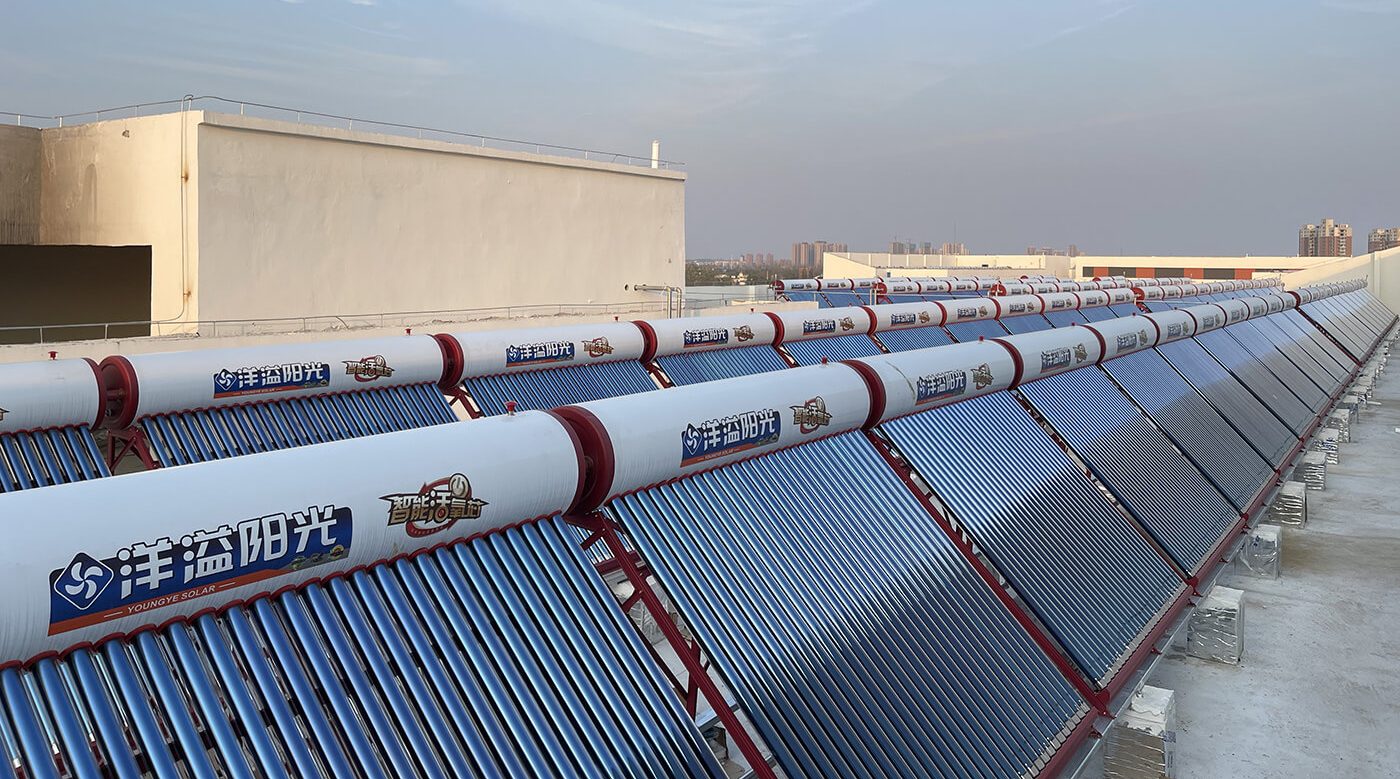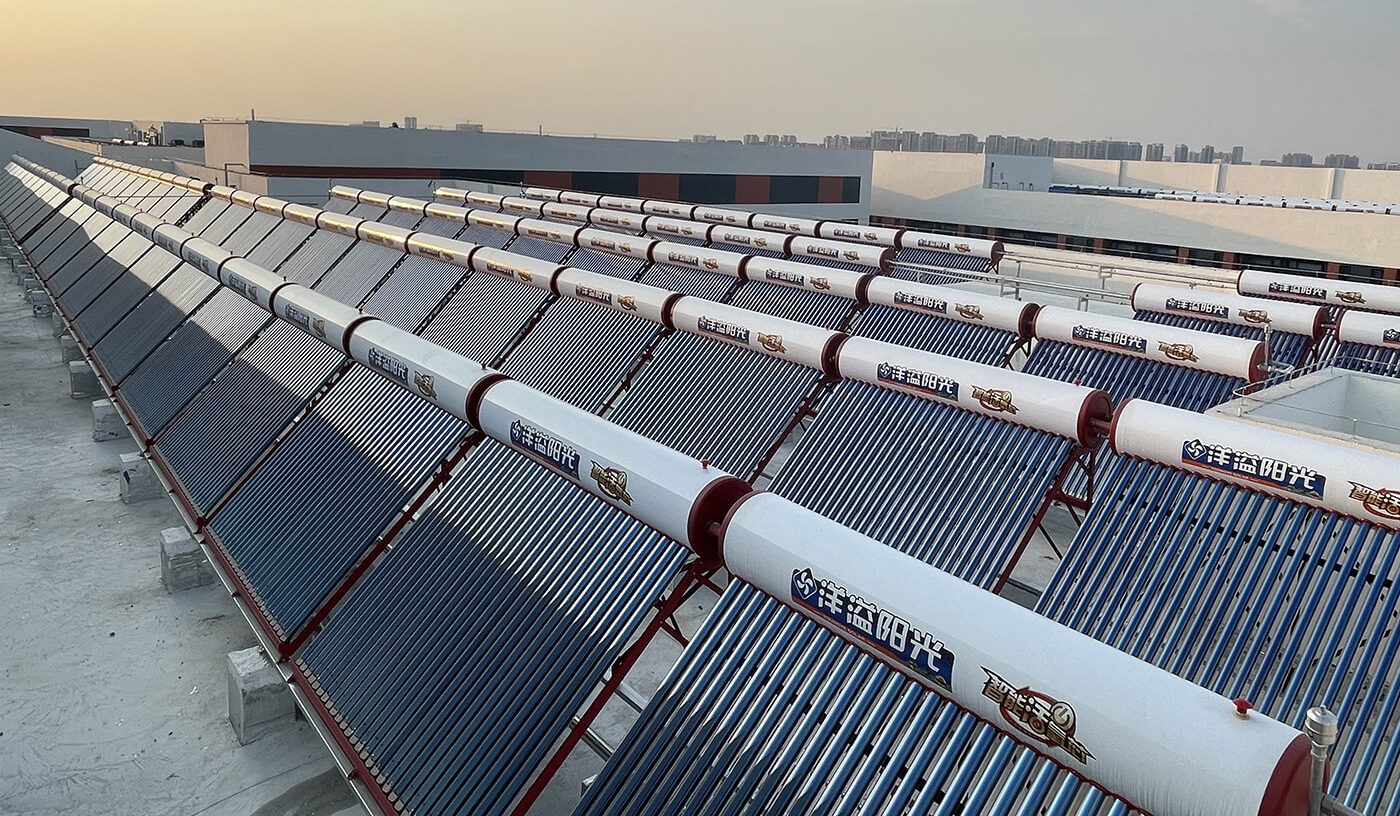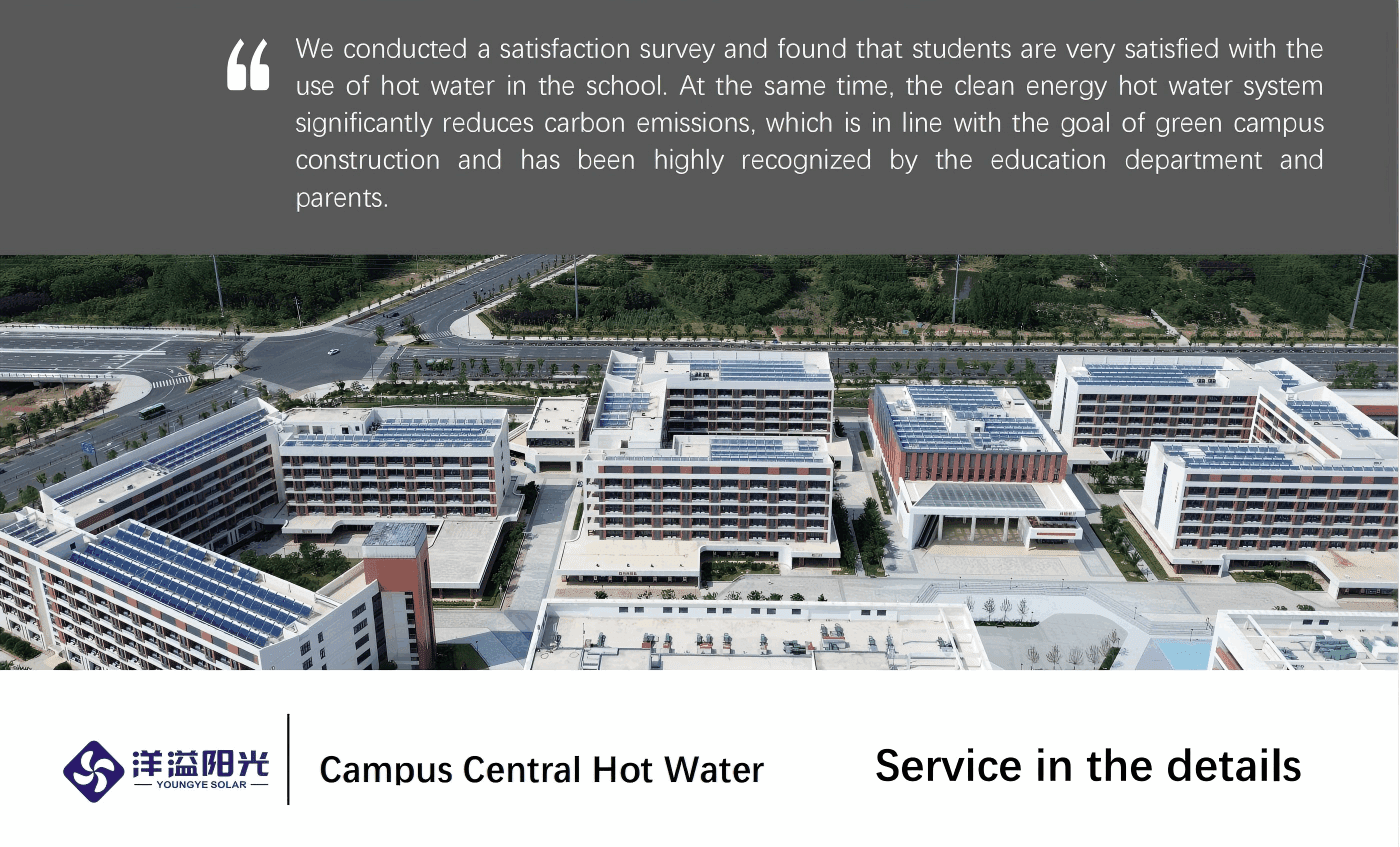The Need:The total planned land area of Xinyang Institute of Technology at Xinyang Normal University is 1362 acres, with a total construction area of 600000 square meters. The school has a capacity of 15000 undergraduate students and 1500 graduate students, and requires the introduction of solar thermal utilization technology to provide domestic hot water for all faculty and students.
The Challenge:
★Water usage pattern: School teachers and students use water at concentrated times, such as washing up in the morning and evening, and taking a shower at night, which can easily lead to insufficient hot water supply during peak water usage periods.
★Number changes: The number of students may vary due to factors such as enrollment, graduation, winter and summer vacations. If the system design is not fully considered, it may result in a mismatch between hot water supply and demand.
★Device config:
210-ton unpowered solar collectors+325 HP air energy+280-ton water tanks+10 sets of 99kW gas-fired volumetric water heaters
★It has been proven that the installation of commercial solar hot water systems is very simple, with intelligent switching of multiple energy sources. Gas stoves are equipped with flameout protection, overpressure relief, leakage protection and other devices. The air energy adopts a water electricity separation design to avoid the risk of electric shock, providing schools with the safest system on the market. Simultaneously configuring an intelligent control system to achieve automatic energy switching and load optimization, facilitating the work of management personnel.
★Now, the device has been installed for nearly two years, and school staff have personally witnessed its hot water performance. Nowadays, water heaters are rarely inspected because they operate at a high level and also utilize intelligent monitoring and remote control. It is now possible to remotely monitor the most important components of the unit, including its energy and water usage.
The model of prioritizing renewable energy and ensuring the minimum of auxiliary energy, balancing energy efficiency, stability, and economy, is an ideal solution for high hot water demand scenarios.



